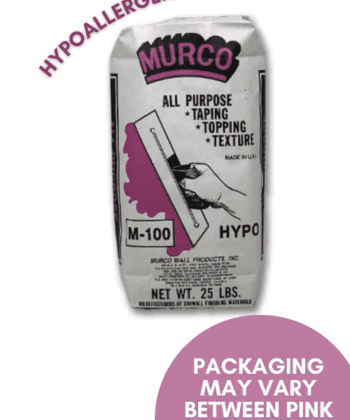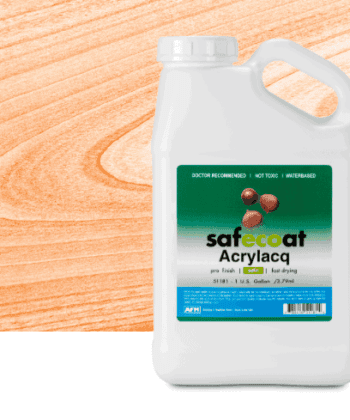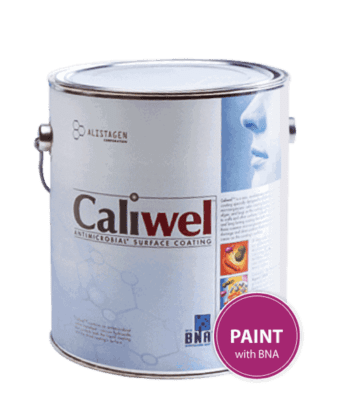Podcast
NTE Podcast: Making Lemonade Out Of Lemons
NTE Podcast: Making Lemonade Out Of Lemons
You’ve all heard me say that no project ever goes perfectly smooth. Mother Nature can drop 10 inches of rain. Sub-contractors ignore your request to use the healthier product. Folks, these things happen all the time. It’s not a question of ‘what if’, its a question of ‘when’. So when the time comes, it requires quick action by the homeowner and/or general contractor to make sure things get back on track. Jay and I give some current real examples of this and how they got successfully resolved.
iTunes
Google Play
Spotify
Transcript
Making Lemonade Out Of Lemons
Andrew Pace: Welcome to the Non Toxic Environments podcast. My name is Andrew Pace. Every week, my cohost Jay Watts and I will discuss healthier home improvement ideas and options. Thank you for finding us. And please enjoy the show.
So, Jay, we were talking before I hit the record button. The problem we have on job sites across the country is not always user error, contractor error, but it’s also out of everybody’s hands, act of God, weather related, freight delays and so forth. But you and I came up with this idea of let’s talk about job site problems because this happens all the time and what do you do? You know, where do you go?
Jay Watts: Yeah, it’s so true. And this is a common thing with all manufacturers. This is not something that unique to the green building product world. This happens in the conventional world all the time. I think it’s demonstrative of the idea that in the contracting world, there’s kind of a fixed idea about the products that are used and the techniques you use to apply them to surfaces. And I think where a disconnect can happen is a contractor will appropriate those tools and techniques that they’re familiar with when in reality if they’re unfamiliar with a coating, any coating for that matter, whether it’s a conventional coating or one like ours, that there should be a step back to evaluate any nuances that might be necessary in the application of said product. Unfortunately we know Andy that because of budgeting and you know, timing and the availability of contractors to be on jobs, sometimes that part of the equation gets overlooked. Then we wind up in situations that we’re going to probably talk about a little bit here where something went sideways and then why did it happen and is there some kind of thinking about how to prevent these things in the future?
Andy: So folks, as you can tell, today’s topic is going to be on how do you deal with problems on the job site? How do you deal with situations where something occurred that nobody was expecting and where do you go from that point? And so Jay, let me start the topic then with a project that I am working on currently. Very good customer of ours. I mean these people are friends of mine now, we talk so often. They’re building a home where it’s as healthy can be. They have family members that are suffering from the detrimental effects of mold sensitivities. And their last home home just had a whole horrible mold problem. So mold obviously is a key issue here, right? They’re building a home, it’s under construction. The home gets framed and then what happens? It starts to rain. Now everybody who listens to this show knows that. I’ve talked about this before. One of the reasons why I’m not a big fan of Tyvec and I’m not a big fan of traditional stick framing of homes is because of that off chance that when the home was being built, at some point all the crews have to leave the job site because it’s raining too much. Happened on this job and there’s no ready defense. There’s no defense. Nothing you can do about it. You can’t have crews onsite building a multistory home. They can’t put even a temporary roof on the home because of the deluge of rain coming down.
Jay: It’s almost like you’d have to tent it like you’re doing a pest control tenting. But that doesn’t happen either.
Andy: It doesn’t happen either. What happened on this project? Well, they got a bunch of rain. They got 10 to 15 inches of rain over about a two week period. All of the framing in the house, not just the exterior framing, Jay, all of the interior framing, every stick of wood in the home starts to grow mold. I mean, it literally breaks my heart for a family who is specifically building a home to avoid the mold problems they’re running into this. And I can’t blame the contractor by any means, and it’s not his fault that it started to rain so hard. So what do you do? Honestly, the first thing you can do folks, if you are a contractor or if you’re hiring a contractor for a project, whenever there’s a problem on the job sites, no matter what it is, stop where you’re at. Stop what you’re doing, put down the tool, put down the material and make a phone call or to contact somebody who you’re working with, somebody who you trust and ask the question, what should I do at this point? And folks, that’s what these people did on this project that I’m talking about. You know, the whole house was framed. They were starting to work on some exterior finishes and it started to rain. They noticed a little bit of mold developing on the wood. And that’s when they called. By the time that the construction team was able to do something about it. They sent me pictures and I could see black mold spots on every stick of wood in the house. We quickly sent down, I want to say a hundred gallons of Caliwel to the house. And matter of fact, this weekend, Memorial Day weekend, there’ll be spraying every stick in the house with the Caliwel industrial product.
Jay: What was the prep for the Caliwel? What did they have to do to the surfaces prior to Caliwel?
Andy: That’s the nice thing about Caliwel going on raw wood that might have mold on it. You don’t have to wash the wood. Matter of fact, Caliwel or Alistagen, the manufacturer of the product, talks out against it. They discouraged you in any cleaning with any biocidal type cleaning materials because all it does is get in the way of what the Caliwel product can do. So there’s gotta be a little moisture in the wood. You can’t do anything about that. But it’s just a matter of spraying on the Caliwel.
Jay: I don’t want to get too deep into this other than the fact that it’s just in my mind you’re saying this. Is there any problem with the moisture in the wood having an impact on the Caliwel curing cycle? We talk about this occasion when people are having prolonged curing issues, which is usually defined as odor, right? And we’re wondering about moisture content and are we in a situation where curing is being interrupted because there’s moisture present. So I guess is that an issue with Caliwel or no?
Andy: It is a little bit of an issue. Like I said, just before a little bit of moisture is not going to hurt it. In this particular project, the roof decking wasn’t completed. So before it started to rain hard and obviously the seams weren’t sealed and so forth. So there’s a lot of water coming to the house. What they did was, what the homeowners did was they bought some industrial fans, some industrial dehumidifiers. They really did a wonderful job of nipping this in the bud. So imagine how much worse it could have been. At this point the homeowner is saying to themselves, we’re only as far as rough framing, do we just knock this down and start again? I mean, this is how serious this was. But what they did was they stopped anything else going on in the home. They got this equipment, they started to dry it out, they did the right thing, folks, they did everything correctly. And then they’re able to get the wood dry enough that it’ll accept the Caliwel. They’re also gonna use the Caliwel to spray on all the block walls in the basement. They’re just so afraid of mold. And I don’t blame them. I really don’t.
Jay: Everyone’s aware of the challenges and the danger of mold, there’s not a soul that doesn’t understand that.
Andy: Right. And now they have a temporary roof on the home, which is great. So now no new moisture’s coming into the house or water I should say. They are certainly in the right position, but taking this step of applying the Caliwel product will definitely solve that problem. It’ll salvage the project. Also even in areas where they didn’t see mold. If they’re applying some Caliwel like the block walls. It’s good peace of mind.
Jay: Yes. You know, Andy, I know with your commercial background, you’re familiar with at least I think I have this correctly, you’re familiar with job site punch lists.
Andy: Yes I am.
Jay: So it’s coming to me that maybe, maybe this is something that you and I can work on together is to come up with maybe a checklist for people they can use as a punch list on a project and they can actually go down the list, item by item to make sure that, and of course in this case where we’ve got act of God, we can’t really predict that, but I’m thinking maybe the idea of a punch list for the clients so they can actually go back and say, okay, there was this step, check that was done correctly. Next step check, that was done correctly. I’m thinking that makes some sense, but it may be something that might be too cumbersome, but I’m searching for some guidelines here for our listeners to be able to kind of appropriate when they’re in their project instead of just turning it over and lists walking away and not paying attention and then finding out later we’ve got a big problem, which leads me to my issue, this is very recent. In fact, today as recent as it gets: a client of ours, has some Douglas fir doors, interior doors that they wanted to stain and seal. And of course they were able, through their research, to find AFM and made an investment in our Durostain and our clear finish called Acrylacq. They hired a contractor and the contractor’s opinion was that the door porosity, the Douglas fir porosity would be a challenge for the stain. And the concept there, which is consistent with good practice in many cases, was to actually precondition the wood with a conditioner. And what the conditioner does folks, it’s like a sealer that goes on and it evens the porosity of the wood. So the soft areas and the hard areas kind of even up. And what that means in a staining job is that you’ll get a much more even appearance of the color of the stain as it goes onto the wood. It won’t soak in one place really deeply and make it darker and not soak in another place and be really light. So in this particular case, the contractor used a conditioner on the wood and then stain the wood and then applied our clear finish over the wood. And the client reported that this was a disaster. And I asked that they send photos, which they did. Andy has seen the photos now too. So he may comment on it as well. But basically you could see that the application of the conditioner was done in such a haphazard way which of course means that anything to do with staining is going to be absolutely a disaster as well. There’s no way for this to fix itself. And what’s what’s so amazing about this is that this would be something that would have been immediately noticed. The contractor did all the doors, all 13 doors, when door number 1 would have been demonstrative of what was going on. And folks, let me be clear, this would have been immediately demonstrative, Oh, it dried a couple of days and then we discovered it. No, as soon as that stain hit that conditioned wood where the sealer that was on there, that preconditioning was done unevenly, that it was going to jump out at you. It was just going to blare out and you would have noticed it. And that’s what Andy’s referring to at this point. The contractor’s responsibility, let me repeat, his responsibility is to stop because anyone can see that this is not acceptable. Stop, make a phone call to the manufacturer, to the dealer and get some counseling on how to not continue with this and come up with a remedy that will solve the problem. In this case that wasn’t done. And now the client client is sick and I don’t blame them. And I’ve suggested to them that sadly there’s only really two remedies here. I mean remedy one, we basically get this all off the wood and we start from scratch or remedy two, which is not the ideal remedy, but the only other remedy would be to paint these doors. My sense is that that’s not the remedy they’re looking for. So I’m sad to say that I think this is probably gonna wind up being a a redo job. I know for a fact that I would not re-hire the contractor to do this and my guess isn’t telling me if I’m off base on this Andy, but my guess is this contractor probably wouldn’t want to come back to this job anyway.
Andy: Well, based upon the pictures that you sent me, Jay, it’s hard for me to put into words for everybody in the audience how horrible these doors look, it’s hard for me to put into words how horrible this contractor is, that they would even allow this to be given to a client, right? Folks, if you have a contractor who’s never used something that you are asking them to use, a good contractor is going to say, all right, well let me just play with the product a little bit. I’m going to do a couple of sample pieces so I understand how the products work, how they react. That’s the first thing for sign of a good contractor. A second kind of a good contractor, as Jay said, first of all whatever they used for a pretreatment obviously was not compatible with the AFM Durostain. Either was not compatible or it was just slopped on so haphazardly that they thought that the stain would just cover up any of their mistakes. But yes, after the contractor stained door number one, why would you even go to door number two? I mean, it looks horrible, right? And then to go on and do 13 of these doors AND put on two coats of clear finish over it… I can see if you’re doing all the staining of the doors and you’re doing it all one after the next, after the next, and you stain it, you wipe it, you hang it, you sand, hanging it and you’re just doing these things and you’re letting them dry. Now you go back to door number one after 12 to 24 hours of dry time and you look at door number one, you go, Oh, that looks horrible. And your first thought is wow, this looks horrible. I think I’m going to finish it. I think I’ll put two coats of finish on. This is a contractor who does not care about his or her work. They don’t care about their client. They’re using products that they don’t know how to use. They don’t care to learn how to use. And their mindset probably was, listen if this turns out lousy I’m just going to blame the product. I don’t have any good things to say about what I saw in those pictures. The first project we talked about act of God, right? You know, nobody could predict 13 or 15 inches of rain. This, everybody in the world could have predicted what’s going to happen with this if they just open their eyes. So what do you do? As Jay said, as soon as you see something that does not look correct, you stop, you put the brush down, you put the sprayer down, whatever it is, and start making phone calls. Let’s get this figured out. If they would have contacted wherever they got their material from and had a conversation about this, the problem could have easily been solved before one door was really ruined.
Jay: Correct. You know, it reminds me too, and we’ve spoken about this in the past, folks, if if you’re in a situation where a contractor comes to the project with some skepticism, it’s really incumbent upon you to make sure that you’re paying attention all through the process. I can cite another example here. I know sometimes this happens. It’s rare, but it does happen. Contractors signed onto a project and they have a very negative attitude about the products they’re asked to use. So much so that they would even say, which is kind of strange to me. They will say these words, I can’t guarantee my work if I use a product I’m not familiar with. And that’s always baffled me a little bit because I want to believe that the pros out there that are doing this kind of work are craftsmen. And as a craftsman, you become familiar with, you should become familiar with and want to become familiar with all the different options that may be put in front of you. And as Andy said, if you’re asked to use an option that you’re unfamiliar with, then you do what Andy suggested. As you tell the client, I may have to charge you a little more because I think this is what happens. They come to a job, they do a bit, and they’ve got it all figured out to the hour, but then the client says, use a new product. And they’re like, well, Oh, wait a minute. That’s going to mess up my bidding. I’m going to have to charge him work. Listen, folks, I’d rather have the contractor tell me it’s going to cost a little more for me to figure out what I’m doing so I do it right so that we don’t have this mess on our hands, which is going to cost hundreds and hundreds and hundreds of dollars more than it would have cost you to have him give you another hour of his time on the bill.
Andy: For sure. And so this… boy, I keep on thinking about this and I wonder what goes through the head of somebody who takes on a project like this and take somebody’s money and says, this is the best I can do. It’s truly, truly remarkable. So all that leads to my next example, because you touched on something, Jay, about how contractors love to use that phrase. Well, if we’re not going to use a product that I’m familiar with and I can’t guarantee my work, well, this is what happened on a job site. Another job site we’re working on here locally where a couple is building a wonderful new healthy home, which is just going to be a fabulous project. This is going to be a showcase that I can talk to people about. Matter of fact, when job is all done, I’m going to go be going down to the house and actually broadcasting from the home, excellent video to show everybody what it’s all about. Well, the couple of designing the home, they’re actually doing the general contracting work, which if you’ve never been a general contractor before, a new home is not what I’d recommend you start with. But you know, they are thorough and diligent people and they’re doing a wonderful job. But it’s tough because you have to put up with the games at the subcontractors like to play. And well, what happened in this house is they’re at the drywall stage and I won’t get into the total specifics of the project, but some of the drywall is the paperless drywall. Some of it is synthetic drywall, some of it’s traditional drywall. But the entire home is being mudded or skim coated with the Murco M100 product, which is the only hypoallergenic drywall mud that we use. This is at the homeowners request. They are extremely, extremely concerned about formaldehyde. So keep that in mind. They got done with applying the first coat of Murco and the drywall contractor approached the husband, I believe, and said we need to do a level five finish so we can’t use the Murco product. We have to use our product and so forth. And I don’t think that there was a true understanding of what that meant. And the husband said, sure, go ahead, do it. We want to get this done right. Side note, I do understand sometimes you have to take a step backwards to take a step forward or take two steps forwards. Sometimes you have to use a product that’s not the healthiest in the world to achieve ultimately an overall healthier project, and longer lasting project and so forth. I don’t think this is one of those situations. I think this is the situation of the contractor just didn’t want to use the Murco product anymore. So now the final coat of drywall mud in the entire home is a premixed drywall mud that contains biocides. The wife comes up here few days ago and she’s a very good client of ours, just a wonderful friend. And she’s very concerned that she doesn’t want her kids living in a home that there are biocides coming off of the drywall mud. I don’t blame her. So here we have a situation where we’ve got a home under construction, contractor made a bad decision by forcing the homeowner’s hand and maybe pitting one homeowner against the other a little bit and used a product that they shouldn’t have used. Now do you throw the whole thing out? Do you rip out all the drywall and start from scratch or do you salvage the project, keep things moving, because you want this home completed and you don’t want to cause more environmental concerns by ripping out all this drywall and having to dispose of it? So we took the approach that we know that the Safecoat primers and paints will seal up toxic off gassing. With that, the entire home is being primed right now with the AFM Primecoat primer. Matter of fact, we’re doing two coats, Jay. We understand that two to three coats of any AFM product will seal up chemical off gassing anywhere from 98 to a hundred percent. It’s hard to give an exact number number because we can’t actually review each square inch of the home, but we know 98 to a hundred percent. So they’re going to be priming the entire home, all the drywall with two coats of the Primecoat. And probably finishing now with two coats of the new GDC Naturals product, which is the plant oil and mineral based paint that we source from AFM and it’s the new GDC private label product. This is how you kind of make lemonade out of lemons, right? You can’t rip out everything. I don’t think it’s a good move to do that because you could also create a whole new set of problems because of the dust that you’ll generate in the removal process. And ultimately at the end of the day when the project is complete, those walls will be completely sealed. You will not have off gassing from that drywall mud.
Jay: I’m sure this was a huge relief to your client.
Andy: Huge relief.
Jay: It was an option other than demolition.
Andy: Right. And because you’d never know in demolition, it’s kind of like doing remodeling, now you don’t know what’s going to happen during the demolition process. What else will you damage? What will you have to repair, replace from that? I’d rather actually just finish it with materials that I know will solve the problem. Now this problem does not exist anymore. You had alluded to this before, Jay, and I’m just going to mention, we did a show back in July of 2019 called Project Planning to Avoid Frustration. I’ll link it in the show notes, take a listen to that. Talking about putting together a punch list, putting together a list of points that you’re trying to achieve on the project, making sure you’re not over estimating what can be done. You’re setting your expectations properly.
Jay: So important.
Andy: So important. Again, Project Planning to Avoid Frustration is the name of the podcast from July of 19.
Jay: Perfect, great segue. Well, Andy, I think we’ve done a pretty good job of a tricky conversation here. There’s always a lot of emotion impacting these situations and of course a a lot of money being spent and it’s probably as important as just the anticipation of something really wonderful that kind of gets out of control and the dream bubble gets popped and sometimes that’s very difficult for most people to be able to manage well. The emotional part of it is sometimes an impediment to some clear thinking. No one wants to point fingers at anyone. I mean, that’s the last thing we want to do. But invariably that happens because people’s sense of responsibility slips a little bit. Oh, it’s not my fault. It’s that fault. You know, I want to point my finger, you know, sadly, folks in the coatings industry a lot, and this is just across the board with coatings companies, you ask any of the big brands, they’ll tell you the same thing. There’s a lot of finger pointing at products when the finger pointing shouldn’t be at the product. It should be turned around and pointed at the person who is applying products. Now, contractors, if you’re listening, we don’t want to beat you guys up. There are a lot of you out there are fabulous, fantastic craftsman that know their trade. They know when to stop, they know when to learn, they know when to educate themselves and they want to do a very good job. You’re out there. We know that. And for those of you who are wanting to become contractors or think you’re a good contractor, check your pulse every once in a while. Make sure that you’re going to be happy with whatever you provide to your client. And that’s the bottom line. You’ve got to know that this is a work that you’re going to be proud of because you know why? Because it’s all about referrals, folks. It’s about referrals. And if you’re not getting good referrals, guess what? You’re a maybe working at Arby’s or McDonald’s or something.
Andy: Exactly right. Well, I need to give a shout out a group that I talked to last night. I was supposed to do an in person presentation and we weren’t able to do this. But we had a Zoom conference last night with the Holistic Mom’s Network of Lake Country Wisconsin. And interestingly enough, one of the things I did talk about during my presentation was that you have to set the expectations correctly for the project. One of the things I tell everybody that I work with is there is no such thing as a perfect project. Perfection is never the goal of our projects. Tolerance to the materials, budgetary obviously, and a proper understanding of true expectations. You’ll drive yourself to the poor house or the nuthouse trying to build or remodel a perfect healthy home. It’s not going to happen folks. So what Jay and I really tried to convey today and I tried to convey last night was you have to set those expectations and when there is a problem, not if there is a problem, but when there is a problem, stop and call, stop what you’re doing. Stop the contractor, make a few phone calls and there’s almost always a way to fix what’s happening in the two situations that I talked to, we were able to fix the situation and move on and the homeowners will be very, very happy with the finished results in this situation you brought up, Jay, that’s going to be a little tougher because unfortunately the contractor didn’t stop and make a phone call. I don’t think there could be a more clear example of why you want to do that.
Andy: Right? No, I think it’s so painfully clear to this client and I’ll try to help as much as I can on my end. We’re sensitive folks to the situation that’s going on in projects and we try to reach out to our clients and try to satisfy a situation as best as we possibly can. Always remember it’s never too dire. There’s always some resolve. It may not be the best resolve possible, but it’s going to be the one that we can come to.
Andy: Exactly. So I think that comes to the conclusion of this week’s episode of Non Toxic Environments. Jay, this is a Memorial Day weekend. You know, you live in San Diego, it’s the world’s most perfect climate, Here in Wisconsin this is the unofficial official start of summer for us.
Jay: Yeah. Oh yeah.
Andy: A little different this year because of what’s going on. But, for the most part, here in the state of Wisconsin, most of the municipalities have finally wised up and open things up, But we’re still opening up for business folks. Get out there this weekend. Enjoy nature, enjoy some rest and relaxation. Please, take some time to think about those family members, friends, or even those you don’t know who were military members that we’ve lost. So please think about why we have a Memorial day. It’s for those military members that we’ve lost over the years. Jay and I will be back again next week with another episode. Have a wonderful weekend.
View Transcript PDF





